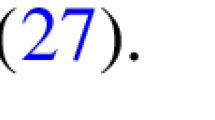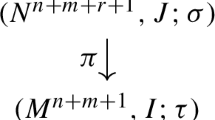Abstract
This article presents a new method for computing sharp bounds on the solutions of nonlinear dynamic systems subject to uncertain initial conditions, parameters, and time-varying inputs. Such bounds are widely used in algorithms for uncertainty propagation, robust state estimation, system verification, global dynamic optimization, and more. Recently, it has been shown that bounds computed via differential inequalities can often be made much less conservative by exploiting state constraints that are known to hold for all trajectories of interest (e.g., path constraints that describe feasible trajectories in the context of dynamic optimization, or constraints that explicitly describe invariant sets containing all system trajectories). However, effective bounding algorithms of this type are currently only available for problems with linear constraints. Moreover, the theoretical results underlying these algorithms do not apply to constraints that depend on time-varying inputs and rely on assumptions that prove to be very restrictive for nonlinear constraints. This article contributes a new differential inequalities theorem that permits the use of a very general class of nonlinear state constraints. Moreover, a new algorithm is presented for efficiently exploiting nonlinear constraints to achieve tighter bounds. The proposed approach is shown to produce very sharp bounds for two challenging case studies.


Similar content being viewed by others
References
Althoff M, Dolan JM (2014) Online verification of automated road vehicles using reachability analysis. IEEE Trans Rob 30(4):903–918
Althoff M, Stursberg O, Buss M (2008) Reachability analysis of nonlinear systems with uncertain parameters using conservative linearization. In: 47th IEEE conference on decision and control, pp 4042–4048
Bernard O, Hadj-Sadok Z, Dochain D, Genovesi A, Steyer JP (2001) Dynamical model development and parameter identification for an anaerobic wastewater treatment process. Biotechnol Bioeng 75(4):424–438
Bresolin D, Geretti L, Muradore R, Fiorini P, Villa T (2015) Formal verification of robotic surgery tasks by reachability analysis. Microprocess Microsyst 39(8):836–842
Geering H (2007) Optimal control with engineering applications. Springer, Berlin
Ghorbal K, Platzer A (2014) Characterizing algebraic invariants by differential radical invariants. In: Ábrahám E, Havelund K (eds) Tools and algorithms for the construction and analysis of systems. Springer, Berlin, pp 279–294
Hariprasad K, Bhartiya S (2014) Adaptive robust model predictive control of nonlinear systems using tubes based on interval inclusions. In: 53rd IEEE conference on decision and control, pp 2032–2037
Harrison GW (1977) Dynamic models with uncertain parameters. In: Avula X (ed.) Proceedings of the first international conference on mathematical modeling, vol 1, pp 295–304
Harwood SM, Barton PI (2016) Efficient polyhedral enclosures for the reachable set of nonlinear control systems. Math Control Signal 28(1):8
Harwood SM, Barton PI (2017) Affine relaxations for the solutions of constrained parametric ordinary differential equations. Optim Control Appl Methods 39:1–22
Harwood SM, Scott JK, Barton PI (2016) Bounds on reachable sets using ordinary differential equations with linear programs embedded. IMA J Math Control Inf 33(2):519–541
Hindmarsh AC, Brown PN, Grant KE, Lee SL, Serban R, Shumaker DE, Woodward CS (2005) SUNDIALS, suite of nonlinear and differential/algebraic equation solvers. ACM Trans Math Softw 31:363–396
Houska B, Chachuat B (2014) Branch-and-lift algorithm for deterministic global optimization in nonlinear optimal control. J Optim Theor Appl 162(1):208–248
Houska B, Villanueva M, Chachuat B (2013) A validated integration algorithm for nonlinear ODEs using Taylor models and ellipsoidal calculus. In: 52nd IEEE conference on decision and control, pp 484–489
Houska B, Villanueva ME, Chachuat B (2015) Stable set-valued integration of nonlinear dynamic systems using affine set-parameterizations. SIAM J Numer Anal 53(5):2307–2328
Julius AA, Pappas GJ (2009) Trajectory based verification using local finite-time invariance. Springer, Berlin, pp 223–236
Kishida M, Braatz RD (2014) Skewed structured singular value-based approach for the construction of design spaces: theory and applications. IET Control Theory A 8(14):1321–1327
Kurzhanski A (2011) Hamiltonian techniques for the problem of set-membership state estimation. Int J Adapt Control Signal Process 25(3):249–263
Laumond JPP (1998) Robot motion planning and control. Springer, New York
Limon D, Bravo JM, Alamo T, Camacho EF (2005) Robust MPC of constrained nonlinear systems based on interval arithmetic. IEE Proc Control Theor Appl 152(3):325–332
Lin Y, Stadtherr MA (2007) Validated solutions of initial value problems for parametric ODEs. Appl Numer Math 57(10):1145–1162
Lin Y, Stadtherr MA (2008) Fault detection in nonlinear continuous-time systems with uncertain parameters. AIChE J 54(9):2335–2345
Maidens J, Arcak M (2015) Reachability analysis of nonlinear systems using matrix measures. IEEE Trans Autom Control 60(1):265–270
Makino K, Berz M (2003) Taylor models and other validated functional inclusion methods. Int J Pure Appl Math 4(4):379–456
Mitchell IM, Bayen AM, Tomlin CJ (2005) A time-dependent Hamilton–Jacobi formulation of reachable sets for continuous dynamic games. IEEE Trans Autom Control 50(7):947–957
Moisan M, Bernard O, Gouze JL (2009) Near optimal interval observers bundle for uncertain bioreactors. Automatica 45(1):291–295
Nedialkov NS, Jackson KR, Corliss GF (1999) Validated solutions of initial value problems for ordinary differential equations. Appl Math Comput 105(1):21–68
Neumaier A (1990) Interval methods for systems of equations. Cambridge University Press, Cambridge
Raimondo D, Marseglia G, Braatz R, Scott J (2016) Closed-loop input design for guaranteed fault diagnosis using set-valued observers. Automatica 74:107–117
Raissi T, Ramdani N, Candau Y (2004) Set membership state and parameter estimation for systems described by nonlinear differential equations. Automatica 40(10):1771–1777
Scott J, Barton P (2011) Interval bounds on the solutions of semi-explicit index-one DAEs. Part 2: computation. Numer Math 125(1):27–60
Scott J, Barton P (2015) Reachability analysis and deterministic global optimization of DAE models. In: Ilchman A, Reis T (eds) Surveys in differential algebraic equations III, vol 3. Springer, Berlin, pp 61–116
Scott JK (2012) Reachability analysis and deterministic global optimization of differential-algebraic systems. Ph.D. thesis, Massachusetts Institute of Technology
Scott JK, Barton PI (2010) Tight, efficient bounds on the solutions of chemical kinetics models. Comput Chem Eng 34:717–731
Scott JK, Barton PI (2011) Interval bounds on the solutions of semi-explicit index-one DAEs. Part 1: analysis. Numer Math 125(1):1–25
Scott JK, Barton PI (2013) Bounds on the reachable sets of nonlinear control systems. Automatica 49(1):93–100
Scott JK, Raimondo DM, Marseglia GR, Braatz RD (2016) Constrained zonotopes: a new tool for set-based estimation and fault detection. Automatica 69:126–136
Shen K, Scott JK (2017) Rapid and accurate reachability analysis for nonlinear dynamic systems by exploiting model redundancy. Comput Chem Eng 106:596–608
Shen K, Scott JK (2018) Tight reachability bounds for nonlinear systems using nonlinear and uncertain solution invariants. In: 2018 annual american control conference (ACC), pp 6236–6241
Sideris T (2013) Ordinary differential equations and dynamical systems. Atlantis studies in differential equations. Atlantis Press, Paris
Singer A, Barton P (2006) Global optimization with nonlinear ordinary differential equations. J Glob Optim 34:159–190
Villanueva ME, Feng X, Paulen R, Chachuat B, Houska B (2019) Convex enclosures for constrained reachability tubes. IFAC-PapersOnLine 52(1):118–123. In: 12th IFAC symposium on dynamics and control of process systems, including biosystems DYCOPS 2019
Villanueva ME, Houska B, Chachuat B (2015) Unified framework for the propagation of continuous-time enclosures for parametric nonlinear ODEs. J Glob Optim 62(3):575–613
Villanueva ME, Quirynen R, Diehl M, Chachuat B, Houska B (2017) Robust MPC via minmax differential inequalities. Automatica 77:311–321
Zhao Y, Stadtherr MA (2011) Rigorous global optimization for dynamic systems subject to inequality path constraints. Ind Eng Chem Res 50(22):12678–12693
Acknowledgements
This material is based upon work supported by the Air Force Office of Scientific Research under Award Number FA9550-16-1-0158.
Author information
Authors and Affiliations
Corresponding author
Additional information
Publisher's Note
Springer Nature remains neutral with regard to jurisdictional claims in published maps and institutional affiliations.
Proof of Theorem 1
Proof of Theorem 1
The proof of Theorem 1 is based on a general result from [33] that provides sufficient conditions for two functions \(\mathbf {v},\mathbf {w}\in \mathscr {AC}(I,{\mathbb {R}}^{n_x})\) to bound an arbitrary function \(\varvec{\phi }\in \mathscr {AC}(I,{\mathbb {R}}^{n_x})\) (i.e., \(\varvec{\phi }\) need not be associated with a system of ODEs). This result is stated abstractly in terms of interval-valued mappings of the form \(\varPi _i^L,\varPi _i^U:D_{\varPi }\subset I \times {\mathbb {R}}^{n_x}\times {\mathbb {R}}^{n_x}\rightarrow \mathbb {IR}\). Eventually, these more general functions will be used to represent the operator \({\mathscr {R}}\) used in Theorem 1. The specific conditions we will require of these functions are given in Hypothesis 1.
Hypothesis 1
For every \(i\in \{1,\ldots ,n_x\}\), let \(\varPi _i^L,\varPi _i^U:D_{\varPi }\subset I \times {\mathbb {R}}^{n_x}\times {\mathbb {R}}^{n_x}\rightarrow \mathbb {IR}\) satisfy the following conditions:
- 1.
If \((t,\mathbf {v},\mathbf {w})\in D_{\varPi }\) satisfies \(\mathbf {v}\le \varvec{\phi }(t)\le \mathbf {w}\) and \(\phi _i(t)=v_i\) for some \(i\in \{1,\dots ,n_x\}\), then \({\dot{\phi }}_i(t) \in \varPi ^L_i(t,\mathbf {v},\mathbf {w})\).
- 2.
If \((t,\mathbf {v},\mathbf {w})\in D_{\varPi }\) satisfies \(\mathbf {v}\le \varvec{\phi }(t)\le \mathbf {w}\) and \(\phi _i(t)=w_i\) for some \(i\in \{1,\dots ,n_x\}\), then \({\dot{\phi }}_i(t) \in \varPi ^U_i(t,\mathbf {v},\mathbf {w})\).
- 3.
\(D_{\varPi }\) is open with respect to the set \(A\equiv \{(t,\mathbf {v},\mathbf {w})\in I\times {\mathbb {R}}^{n_x}\times {\mathbb {R}}^{n_x}:\mathbf {v}\le \mathbf {w}\}\). Specifically, for any \(({\hat{t}},\hat{\mathbf {v}},\hat{\mathbf {w}})\in D_{\varPi }\cap A\), there exists \(\eta >0\) such that \(B_{\eta }(({\hat{t}},\hat{\mathbf {v}},\hat{\mathbf {w}}))\cap A\) is a subset of \(D_{\varPi }\).
- 4.
\(\varPi _i^L\) and \(\varPi _i^U\) are locally Lipschitz continuous with respect to \(\mathbf {v}\) and \(\mathbf {w}\), uniformly with respect to t. Specifically, for any \(({\hat{t}},\hat{\mathbf {v}},\hat{\mathbf {w}})\in D_{\varPi }\), there exists \(\eta >0\) and \(\alpha \in L^1(I)\) such that
$$\begin{aligned} d_H(\varPi _i^L(t,\mathbf {v},\mathbf {w}),\varPi _i^L(t,\tilde{\mathbf {v}},\tilde{\mathbf {w}}))&\le \alpha (t)\max \left( \Vert \mathbf {v}-\tilde{\mathbf {v}}\Vert ,\Vert \mathbf {w}-\tilde{\mathbf {w}}\Vert \right) , \end{aligned}$$(46)$$\begin{aligned} d_H(\varPi _i^U(t,\mathbf {v},\mathbf {w}),\varPi _i^U(t,\tilde{\mathbf {v}},\tilde{\mathbf {w}}))&\le \alpha (t)\max \left( \Vert \mathbf {v}-\tilde{\mathbf {v}}\Vert ,\Vert \mathbf {w}-\tilde{\mathbf {w}}\Vert \right) , \end{aligned}$$(47)for every \((t,\mathbf {v},\mathbf {w}),(t,\tilde{\mathbf {v}},\tilde{\mathbf {w}})\in B_{\eta }(({\hat{t}},\hat{\mathbf {v}},\hat{\mathbf {w}}))\cap D_{\varPi }\).
Theorem 3 is the central result we will use to prove Theorem 1. It is proved as Theorem 3.5.1 in [33] under slightly different hypotheses, as discussed below.
Theorem 3
Let \(\varvec{\phi },\mathbf {v},\mathbf {w} \in \mathscr {AC}(I,{\mathbb {R}}^{n_x})\) satisfy
- 1.
\((t,\mathbf {v}(t),\mathbf {w}(t))\in D_{\varPi }, \forall t\in I\).
- 2.
\(\mathbf {v}(t_0)\le \varvec{\phi }(t_0)\le \mathbf {w}(t_0)\).
- 3.
For a.e. \(t\in I\) and each index i,
- (a)
\({\dot{v}}_i(t)\le \sigma _i\) for all \(\sigma _i\in \varPi _i^L(t,\mathbf {v}(t),\mathbf {w}(t))\),
- (b)
\({\dot{w}}_i(t)\ge \sigma _i\) for all \(\sigma _i\in \varPi _i^U(t,\mathbf {v}(t),\mathbf {w}(t))\).
- (a)
If Hypothesis 1 holds, then \(\mathbf {v}(t)\le \varvec{\phi }(t)\le \mathbf {w}(t), \forall t\in I\).
In [33], Theorem 3 is proved with a modified version of Hypothesis 1, which is stated explicitly as Hypothesis 2. We prefer Hypothesis 1 because it is easier to verify when using Theorem 3 to prove Theorem 1. Moreover, the conditions of Hypothesis 1 are much easier to understand, whereas Hypothesis 2 is very abstract. In Lemma 1, we show that Hypothesis 1 implies Hypothesis 2, so that Theorem 3 follows immediately from Theorem 3.5.1 in [33].
Hypothesis 2
For every \(i\in \{1,\ldots ,n_x\}\), let \(\varPi _i^L,\varPi _i^U:D_{\varPi }\subset I \times {\mathbb {R}}^{n_x}\times {\mathbb {R}}^{n_x}\rightrightarrows {\mathbb {R}}\) (i.e., \(\varPi ^{L}_i(t,\mathbf {v},\mathbf {w})\) and \(\varPi ^{U}_i(t,\mathbf {v},\mathbf {w})\) are subsets of \({\mathbb {R}}\), not necessarily intervals). Assume that, given any \(({\hat{t}},\hat{\mathbf {v}},\hat{\mathbf {w}})\in D_{\varPi }\) satisfying \(\hat{\mathbf {v}}\le \varvec{\phi }({\hat{t}})\le \hat{\mathbf {w}}\) and either \(\phi _i({\hat{t}})={\hat{v}}_i\) or \(\phi _i({\hat{t}})={\hat{w}}_i\) for at least one \(i\in \{1,\dots ,n_x\}\), there exists \(\eta >0\) and \(\alpha \in L^1(I)\) such that the following conditions hold for every \((t,\mathbf {v},\mathbf {w})\in B_{\eta }(({\hat{t}},\hat{\mathbf {v}},\hat{\mathbf {w}}))\cap D_{\varPi }\):
- 1.
If \(\phi _i(t)<v_i\), then \(\exists \sigma _i \in \varPi ^L_i(t,\mathbf {v},\mathbf {w})\) such that
$$\begin{aligned} |\sigma _i-{\dot{\phi }}_i(t)|\le \alpha (t)\max (\Vert \max (\mathbf {v}-\mathbf {\varvec{\phi }}(t),\mathbf {0})\Vert ,\Vert \max (\mathbf {\varvec{\phi }}(t)-\mathbf {w},\mathbf {0})\Vert ). \end{aligned}$$(48) - 2.
If \(\phi _i(t)>w_i\), then \(\exists \sigma _i \in \varPi ^U_i(t,\mathbf {v},\mathbf {w})\) such that (48) holds.
Lemma 1
If \(\varPi ^L_i\) and \(\varPi ^U_i\) satisfy Hypothesis 1, then they also satisfy Hypothesis 2.
Proof
Assume that Hypothesis 1 holds. To verify Hypothesis 2, choose any \(({\hat{t}},\hat{\mathbf {v}},\hat{\mathbf {w}})\in D_{\varPi }\) such that \(\hat{\mathbf {v}}\le \varvec{\phi }({\hat{t}})\le \hat{\mathbf {w}}\) and either \(\phi _i({\hat{t}})={\hat{v}}_i\) or \(\phi _i({\hat{t}})={\hat{w}}_i\) for at least one \(i\in \{1,\dots ,n_x\}\). Define
Note that \(({\underline{\varvec{\phi }}}({\hat{t}},\hat{\mathbf {v}},\hat{\mathbf {w}}),{\overline{\varvec{\phi }}}({\hat{t}},\hat{\mathbf {v}},\hat{\mathbf {w}}))=(\hat{\mathbf {v}},\hat{\mathbf {w}})\) and \({\underline{\varvec{\phi }}}(t,\mathbf {v},\mathbf {w})\le \varvec{\phi }(t) \le {\overline{\varvec{\phi }}}(t,\mathbf {v},\mathbf {w}),\)\(\forall (t,\mathbf {v},\mathbf {w})\in I\times {\mathbb {R}}^{n_x}\times {\mathbb {R}}^{n_x}\).
With \(({\hat{t}},\hat{\mathbf {v}},\hat{\mathbf {w}})\) as above, let \(\eta _{C3}>0\) satisfy Condition 3 of Hypothesis 1, and let \(\eta _{C4}>0\) and \(\alpha \in L^1(I)\) satisfy Condition 4 of Hypothesis 1. Set \(\eta _C=\min (\eta _{C3},\eta _{C4})\). Since \(({\underline{\varvec{\phi }}}({\hat{t}},\hat{\mathbf {v}},\hat{\mathbf {w}}),{\overline{\varvec{\phi }}}({\hat{t}},\hat{\mathbf {v}},\hat{\mathbf {w}}))=(\hat{\mathbf {v}},\hat{\mathbf {w}})\) and the functions \({\underline{\varvec{\phi }}}\) and \({\overline{\varvec{\phi }}}\) are continuous, we may choose \(\eta \in (0,\eta _C]\) such that
By Condition 3 of Hypothesis 1, it follows that
We now show that Hypothesis 2 holds with this choice of \(\eta \) and \(\alpha \). To verify Condition 1 of Hypothesis 2, choose any \((t,\mathbf {v},\mathbf {w})\in B_{\eta }(({\hat{t}},\hat{\mathbf {v}},\hat{\mathbf {w}}))\cap D_{\varPi }\) such that \(\phi _i(t)<v_i\). We will apply the Lipschitz condition (46) with this choice of \(\mathbf {v}\) and \(\mathbf {w}\) and with \(\tilde{\mathbf {v}}={\underline{\varvec{\phi }}}(t,\mathbf {v},\mathbf {w})\) and \(\tilde{\mathbf {w}}={\overline{\varvec{\phi }}}(t,\mathbf {v},\mathbf {w})\). To see that this condition is applicable, first note that \((t,\mathbf {v},\mathbf {w})\in B_{\eta _{C4}}(({\hat{t}},\hat{\mathbf {v}},\hat{\mathbf {w}}))\) because \(\eta \le \eta _{C4}\). Moreover, in light of (50) and (51), we are guaranteed that \((t,\tilde{\mathbf {v}},\tilde{\mathbf {w}})\in B_{\eta _{C4}}(({\hat{t}},\hat{\mathbf {v}},\hat{\mathbf {w}}))\cap D_{\varPi }\). Thus, (46) gives
Next, we apply Condition 1 of Hypothesis 1 to the point \((t,{\underline{\varvec{\phi }}}(t,\mathbf {v},\mathbf {w}),{\overline{\varvec{\phi }}}(t,\mathbf {v},\mathbf {w}))\in D_{\varPi }\). This is possible because \({\underline{\varvec{\phi }}}(t,\mathbf {v},\mathbf {w})\le \varvec{\phi }(t)\le {\overline{\varvec{\phi }}}(t,\mathbf {v},\mathbf {w})\) and \(\phi _i(t)=\min (\phi _i(t),v_i)={\underline{\phi }}_i(t,\mathbf {v},\mathbf {w})\). Thus, Condition 1 of Hypothesis 1 ensures that \({\dot{\phi }}_i(t)\in \varPi _i^L(t,{\underline{\varvec{\phi }}}(t,\mathbf {v},\mathbf {w}),{\overline{\varvec{\phi }}}(t,\mathbf {v},\mathbf {w}))\). Then, by the definition of the Hausdorff metric, (52) implies that \(\exists \sigma _i\in \varPi _i^L(t,\mathbf {v},\mathbf {w})\) satisfying (48). This proves Condition 1 of Hypothesis 2, and Condition 2 follows from an analogous argument. \(\square \)
To prove Theorem 1, we will apply Theorem 3 with the following definitions:
Lemma 2
Let \((\mathbf {x}_0,\mathbf {u},\mathbf {x})\in X_0\times {\mathscr {U}}\times \mathscr {AC}(I,{\mathbb {R}}^{n_x})\) be any solution of (2). Under Assumption 1, definitions (53)–(55) satisfy Hypothesis 1 with \(\varvec{\phi }\equiv \mathbf {x}\).
Proof
To verify Condition 1 of Hypothesis 1, choose any \((t,\mathbf {v},\mathbf {w})\in D_{\varPi }\) such that \(\mathbf {v}\le \varvec{\phi }(t)\le \mathbf {w}\) and \(\phi _i(t)=v_i\) for some \(i\in \{1,\dots ,n_x\}\). These conditions imply that \(\mathbf {x}(t)=\varvec{\phi }(t)\in {\mathscr {B}}_i^L([\mathbf {v},\mathbf {w}])\). Moreover, by the definition of \(D_{\varPi }\), \((t,\mathbf {v},\mathbf {w})\in D_{\varPi }\) implies that \((t,U,{\mathscr {B}}_i^L([\mathbf {v},\mathbf {w}]))\in D_{{\mathscr {R}}}\). Since \((\mathbf {x}_0,\mathbf {u},\mathbf {x})\) is a solution of (2), Condition 1 of Assumption 1 implies that
By (54), it follows that \({\dot{\phi }}_i(t)={\dot{x}}_i(t)\in \varPi ^L_i(t,\mathbf {v},\mathbf {w})\). This proves Condition 1 of Hypothesis 1, and Condition 2 follows from an analogous argument.
To verify Condition 3 of Hypothesis 1, choose any \(({\hat{t}},\hat{\mathbf {v}},\hat{\mathbf {w}})\in D_{\varPi }\cap A\). By (53), \(({\hat{t}},U,{\mathscr {B}}_i^{L/U}([\hat{\mathbf {v}},\hat{\mathbf {w}}]))\in D_{{\mathscr {R}}}\) for all \(i\in \{1,\ldots ,n_x\}\). By Condition 2 of Assumption 1, \(D_{{\mathscr {R}}}\) is open with respect to t and Z. Thus, there must exist \(\eta >0\) such that
Moreover, by the definition of \({\mathscr {B}}_i^{L/U}\), it follows that
We claim that Condition 3 of Hypothesis 1 holds with this \(\eta \). To see this, choose any point \((t,\mathbf {v},\mathbf {w})\) in \(B_{\eta }(({\hat{t}},\hat{\mathbf {v}},\hat{\mathbf {w}}))\cap A\). It suffices to show that \((t,\mathbf {v},\mathbf {w})\in D_{\varPi }\). Since \((t,\mathbf {v},\mathbf {w})\in A\), we have \(t\in I\) and \(\mathbf {v}\le \mathbf {w}\). Moreover, since \((t,\mathbf {v},\mathbf {w})\in B_{\eta }(({\hat{t}},\hat{\mathbf {v}},\hat{\mathbf {w}}))\), it follows from the definition of \(d_H\) that \(d_H([\mathbf {v},\mathbf {w}],[\hat{\mathbf {v}},\hat{\mathbf {w}}])\le \eta \). Finally, since \(|t-{\hat{t}}|\le \eta \) as well, (58) ensures that \((t,U,{\mathscr {B}}_i^{L/U}([\mathbf {v},\mathbf {w}]))\in D_{{\mathscr {R}}}\). Thus, by (53), \((t,\mathbf {v},\mathbf {w}) \in D_{\varPi }\), as desired.
To verify Condition 4 of Hypothesis 1, choose any \(({\hat{t}},\hat{\mathbf {v}},\hat{\mathbf {w}})\in D_{\varPi }\). By (53), \(({\hat{t}},U,{\mathscr {B}}_i^{L/U}([\hat{\mathbf {v}},\hat{\mathbf {w}}]))\in D_{{\mathscr {R}}}\) for all \(i\in \{1,\ldots ,n_x\}\). Thus, by Condition 3 of Assumption 1, there exists \(\eta ,L>0\) such that
for every \(t\in B_{\eta }({\hat{t}})\) and \(Z,{\tilde{Z}}\in B_{\eta }({\mathscr {B}}_i^{L/U}([\hat{\mathbf {v}},\hat{\mathbf {w}}]))\). We claim that Condition 4 of Hypothesis 1 holds with this choice of \(\eta \) and \(\alpha =L\). To see this, choose any \((t,\mathbf {v},\mathbf {w}),(t,\tilde{\mathbf {v}},\tilde{\mathbf {w}})\in B_{\eta }(({\hat{t}},\hat{\mathbf {v}},\hat{\mathbf {w}}))\cap D_{\varPi }\). It suffices to show that
By (54) and the definition of the Hausdorff metric \(d_{H}\),
But, as argued above, the fact that \((t,\mathbf {v},\mathbf {w})\) and \((t,\tilde{\mathbf {v}},\tilde{\mathbf {w}})\) are elements of \(B_{\eta }(({\hat{t}},\hat{\mathbf {v}},\hat{\mathbf {w}}))\) implies that \({\mathscr {B}}_i^{L}([\mathbf {v},\mathbf {w}])\) and \({\mathscr {B}}_i^{L}([\tilde{\mathbf {v}},\tilde{\mathbf {w}}])\) are elements of \(B_{\eta }({\mathscr {B}}_i^{L/U}([\hat{\mathbf {v}},\hat{\mathbf {w}}]))\). Then, using (59), we have
as desired. The proof of (61) is analogous. \(\square \)
We now prove Theorem 1. Choose any \(\mathbf {x}^L,\mathbf {x}^U\in \mathscr {AC}(I,{\mathbb {R}}^{n_x})\) and suppose that Conditions 1–3 of Theorem 1 hold. Moreover, let \((\mathbf {x}_0,\mathbf {u},\mathbf {x})\in X_0\times {\mathscr {U}}\times \mathscr {AC}(I,{\mathbb {R}}^{n_x})\) be any solution of (2). We show that the hypotheses of Theorem 3 are satisfied with \(\mathbf {v}=\mathbf {x}^L\), \(\mathbf {w}=\mathbf {x}^U\), \(\varvec{\phi }=\mathbf {x}\), and definitions (53)–(55). As a consequence, \(\mathbf {x}(t)\in [\mathbf {x}^L(t),\mathbf {x}^U(t)]\), \(\forall t\in I\), as desired.
With the definition of \(D_{\varPi }\) in (53), Condition 1 of Theorem 3 follows directly from Condition 1 of Theorem 1. Condition 2 of Theorem 3 also follows directly from Condition 2 of Theorem 1 since \(\varvec{\phi }(t_0)=\mathbf {x}(t_0)=\mathbf {x}_0\in X_0\subset [\mathbf {x}^L(t_0),\mathbf {x}^U(t_0)]=[\mathbf {v}(t_0),\mathbf {w}(t_0)]\). Finally, Condition 3 of Theorem 3 follows from Condition 3 of Theorem 1. To see this, choose any \(\sigma _i\in \varPi _i^L(t,\mathbf {v}(t),\mathbf {w}(t))=\varPi _i^L(t,\mathbf {x}^L(t),\mathbf {x}^U(t))\). By (54),
Therefore, by Condition 3(a) of Theorem 1, we must have \({\dot{v}}_i(t)\le \sigma _i\). This proves Condition 3(a) of Theorem 3. Condition 3(b) is proved analogously. Since all of the hypotheses of Theorem 3 are met, we conclude that
This completes the proof of Theorem 1. \(\square \)
Rights and permissions
About this article
Cite this article
Shen, K., Scott, J.K. Exploiting nonlinear invariants and path constraints to achieve tighter reachable set enclosures using differential inequalities. Math. Control Signals Syst. 32, 101–127 (2020). https://doi.org/10.1007/s00498-020-00254-y
Received:
Accepted:
Published:
Issue Date:
DOI: https://doi.org/10.1007/s00498-020-00254-y




